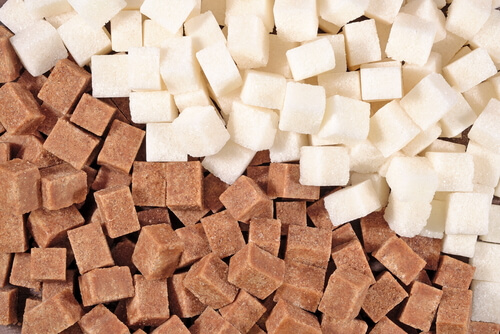The agricultural practices for beet sugar vs cane sugar contribute to differences in production scale.
The agricultural practices for beet sugar vs cane sugar contribute to differences in production scale.
Blog Article
Discover the Uses and Benefits of Beet Sugar Vs Cane Sugar in Your Daily Diet Regimen
Exploring the distinctive high qualities of beet and cane sugar exposes more than just their sweetening abilities; it highlights their distinct effect on health and cookeries. Beet sugar, recognized for its refined flavor, is commonly favored in fragile desserts, whereas cane sugar, with its tip of molasses, includes richness to robust recipes. Each kind holds its own nutritional account and glycemic implications, inviting a much deeper understanding of their duties in a well balanced diet and lasting consumption techniques.
Origin and Manufacturing Processes of Beet and Cane Sugar

The distinct climates and dirt kinds required for growing sugar beets and sugarcane add to differences in their growing techniques and geographic circulation, influencing the economics and sustainability of their production. beet sugar vs cane sugar.
Nutritional Contrast In Between Beet Sugar and Cane Sugar
Regardless of stemming from various plants, beet sugar and cane sugar are nutritionally extremely comparable, both largely being composed of sucrose. Each supplies about 4 calories per gram, equating to roughly 16 calories per teaspoon. Structurally, both sugars are made up of about 99.95% sucrose, with minimal quantities of various other compounds like dampness and trace minerals, which do not dramatically modify their nutritional profiles.
Inevitably, when selecting in between beet sugar and cane sugar based upon dietary content alone, both offer the same benefits and downsides as they are basically forms of the exact same particle-- sucrose, providing fast power without various other nutrients.
Effect on Health: Glycemic Index and Caloric Material
Checking out even more right into the results of beet sugar and cane sugar on health, it is crucial to consider their glycemic index and calorie material. The glycemic index (GI) of both beet and cane sugar is around 65, classifying them as high-GI foods, which can create quick spikes in blood glucose levels.
Each kind of sugar contains about 4 calories per gram, making their caloric web content equivalent. For those monitoring calorie consumption, particularly when managing weight or metabolic health and wellness problems, comprehending this equivalence is essential (beet sugar vs cane sugar). Too much intake of any kind of high-calorie, high-GI food can add to health concerns such as excessive weight, heart illness, and insulin resistance.
Environmental and Economic Factors To Consider of Sugar Production
Beyond health effects, the article source manufacturing of beet and cane sugar also elevates considerable environmental and economic issues. Sugar beet farming tends to call for cooler environments and has a lower geographical footprint contrasted to sugar cane, which thrives in exotic areas.
Additionally, the use of pesticides and fertilizers in both beet and cane sugar cultivation can bring about soil destruction and pollution, more affecting biodiversity and neighborhood water bodies (beet sugar vs cane sugar). The option between cultivating sugar beet or cane often pivots on regional environmental problems and financial factors, making the sustainability of sugar manufacturing an intricate problem
Culinary Applications and Taste Distinctions
While you can look here the ecological and financial aspects of sugar manufacturing are without a doubt substantial, the selection between beet and cane sugar additionally influences cooking applications and flavor profiles. Beet sugar, derived from the sugar beet plant, is recognized for its extremely neutral taste.
Walking cane sugar, drawn out from sugarcane, frequently preserves molasses traces, which pass on an unique richness and depth. This mild molasses flavor enhances the intricacy of baked items, sauces, and sauces. It is specifically favored in products where a caramel undertone is wanted, such as in brownies or gingerbread. Furthermore, the minor variation in moisture content between beet and cane sugar can influence the texture and consistency of dishes, making cane sugar a preferred option for details dishes that profit from its distinct properties.

Conclusion
Finally, both beet and cane sugar have distinctive origins and manufacturing procedures, supplying similar dietary accounts with small differences in salt content and taste. While their influence on health and wellness, particularly concerning glycemic index and calories, is equivalent, the option between them frequently boils down to environmental, economic variables, and details cooking needs. Understanding these aspects can guide consumers in making educated choices that align with their health objectives and taste preferences.
Report this page